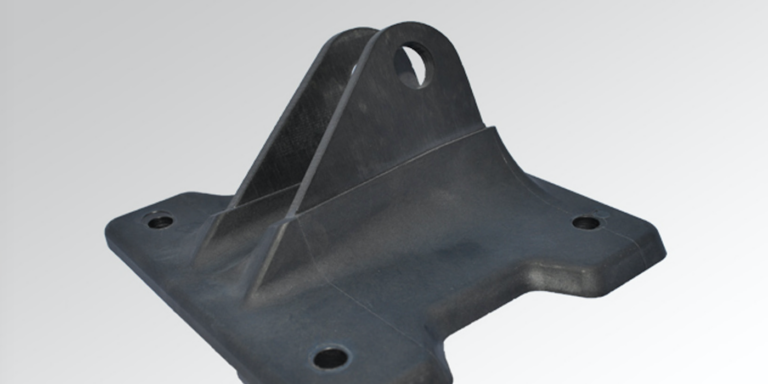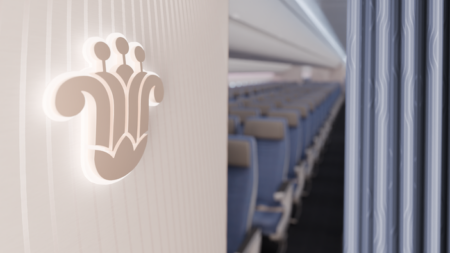Aircraft interiors supplier, Safran Cabin is working with Victrex to qualify a new thermoplastic composite part. The partners are designing a flexible platform to cut planning and time-to-market of multiple brackets, with the first project being a hybrid overmoulded aircraft cabin bracket made of Victrex AE 250 carbon fibre PAEK (polyaryletherketone) composite and PEEK (polyether ether ketone) polymer.
Polymer specialist, Victrex is providing the material, process and tooling expertise required to realise versatile design features while Safran Cabin is providing expertise in design and manufacturing to ensure applicability in aerospace service and certification environments.
“We need to respond to many demands for aircraft brackets and similar structural parts, with each case having many loading, constraint and exposure conditions,” said Tyler Smithson, R&T engineer at Safran Cabin. “The key to success is to develop a flexible composite platform that can be used for multiple projects, lowering our part count and design complexity, cutting time-to-market, speeding time-to-revenue.”
Victrex and Safran Cabin are using an innovative technique whereby AE 250 thermoplastic composite is overmoulded with PEEK high-performance polymer. This hybrid overmoulding technique is a scalable, repeatable technology with potential to help commercial aerospace customers reduce scrap rates, accelerate cycle times, achieve parts consolidation, and reduce the number of secondary operations. According to Victrex, stringent testing and qualification work have indicated that structural aircraft parts produced from AE 250 via hybrid overmoulding can withstand high levels of mechanical stress.
Driving future aerospace design
Safran Cabin’s design process focused on defining parts and moulds adaptable for multiple brackets, with the goal of achieving a family of designs compatible with the same mould. This involved establishing a cost and weight advantage while considering the flexibility of the platform to be used in various applications.
Following the initial design phase, mould-filling and structural simulation methods were combined with various physical testing techniques to identify and mitigate new technology failure modes and to streamline injection moulding manufacturing and cost constraints. Critical characterisations were refined and a productive, repeatable design process developed.
The initial prototype brackets were produced at Tri-Mack Plastics Manufacturing Corporation, and according to the partners the prototype composites have shown up to 20% cost savings, 50% weight savings and a five-times improved ‘buy-to-fly’ ratio compared to the original aluminium part. The bracket is scheduled for final testing and qualification of production parts, with a plan to put the composite bracket in service later this year.





